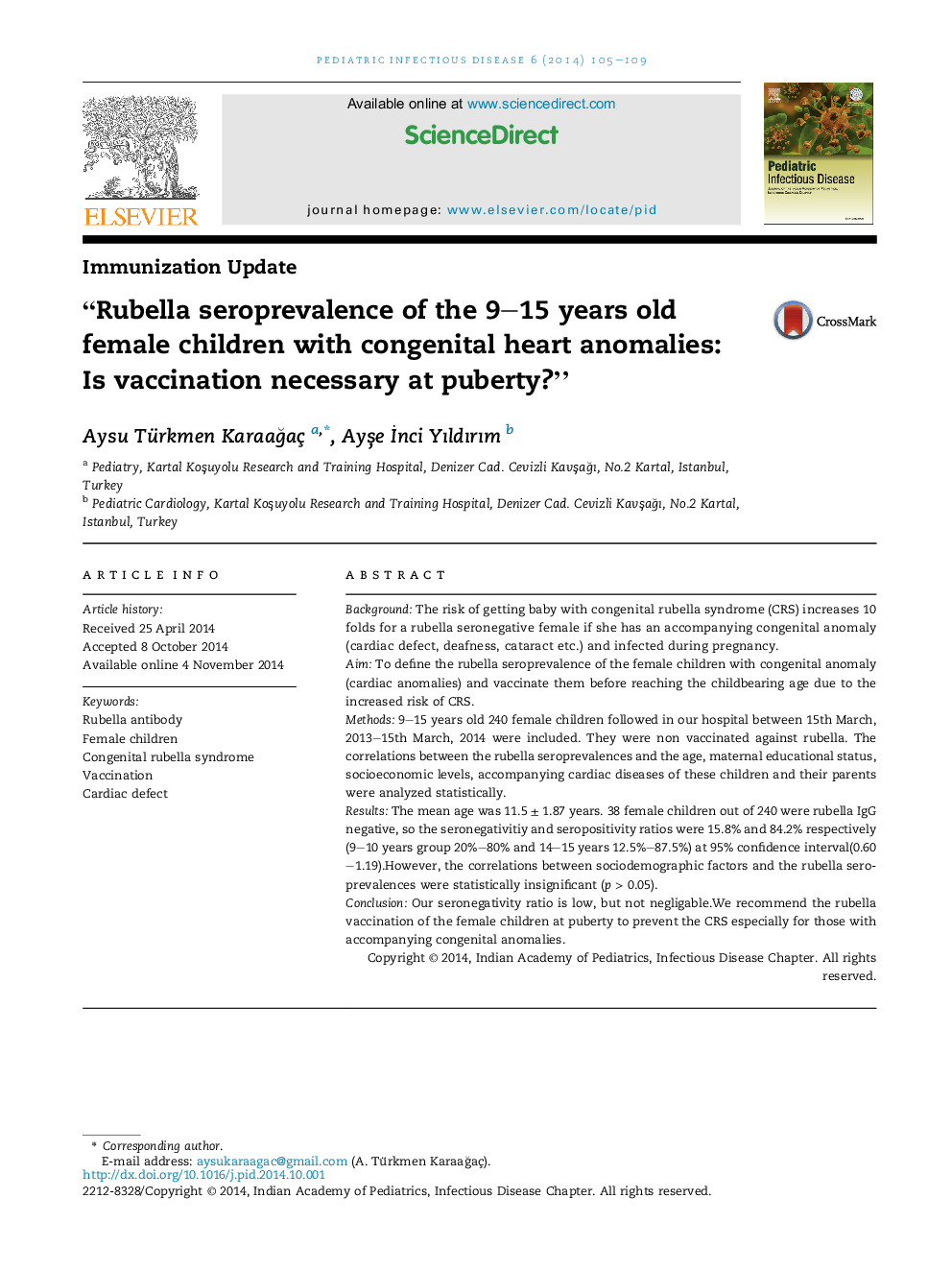| Article ID | Journal | Published Year | Pages | File Type |
|---|---|---|---|---|
| 3382309 | Pediatric Infectious Disease | 2014 | 5 Pages |
BackgroundThe risk of getting baby with congenital rubella syndrome (CRS) increases 10 folds for a rubella seronegative female if she has an accompanying congenital anomaly (cardiac defect, deafness, cataract etc.) and infected during pregnancy.AimTo define the rubella seroprevalence of the female children with congenital anomaly (cardiac anomalies) and vaccinate them before reaching the childbearing age due to the increased risk of CRS.Methods9–15 years old 240 female children followed in our hospital between 15th March, 2013–15th March, 2014 were included. They were non vaccinated against rubella. The correlations between the rubella seroprevalences and the age, maternal educational status, socioeconomic levels, accompanying cardiac diseases of these children and their parents were analyzed statistically.ResultsThe mean age was 11.5 ± 1.87 years. 38 female children out of 240 were rubella IgG negative, so the seronegativitiy and seropositivity ratios were 15.8% and 84.2% respectively (9–10 years group 20%–80% and 14–15 years 12.5%–87.5%) at 95% confidence interval(0.60–1.19).However, the correlations between sociodemographic factors and the rubella seroprevalences were statistically insignificant (p > 0.05).ConclusionOur seronegativity ratio is low, but not negligable.We recommend the rubella vaccination of the female children at puberty to prevent the CRS especially for those with accompanying congenital anomalies.
